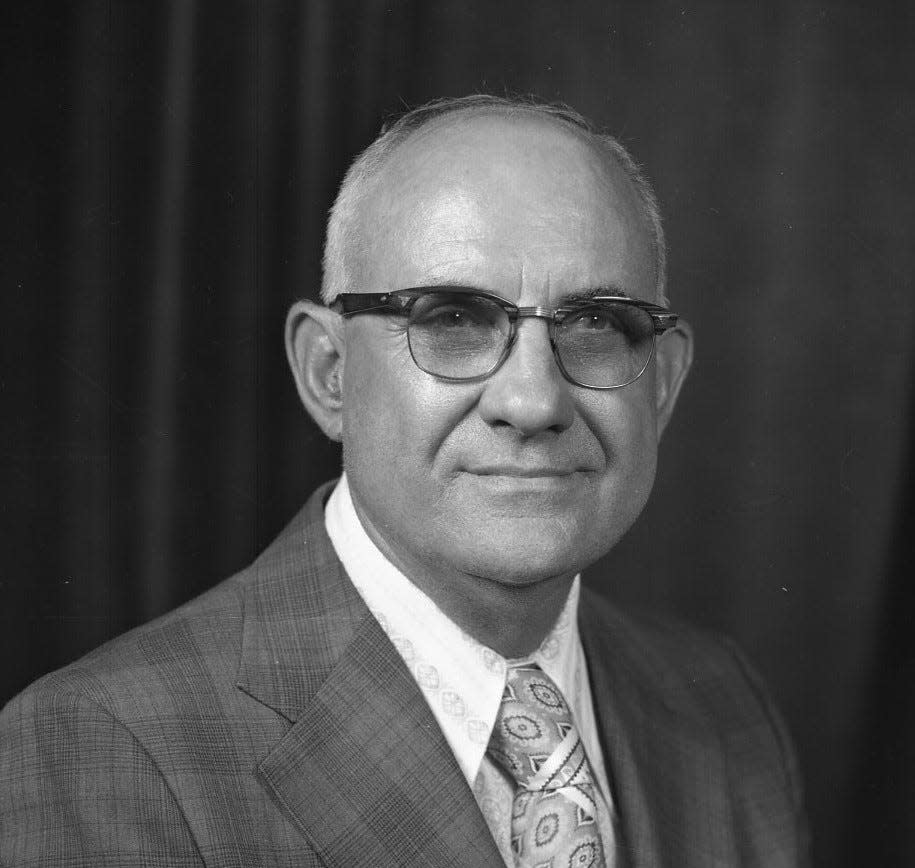Weston Wednesday: Early-day schools in Bartlesville, Dewey

Editor's Note: In collaboration with the Bartlesville Area History Museum, the Examiner-Enterprise has revived the late Edgar Weston's 'Revisiting the Past' columns that ran in the newspaper from 1997-99. Weston's columns recount the history of Bartlesville as well as Washington, Nowata and Osage counties.
There was a subscription school north of the location of the old County Farm on the west side of Coon Creek and near the Beck Cemetery. Mr. George Seidle, who lived all his life in the Bartlesville and Dewey area, is the source of this information. He states that in 1878 his mother, Miss Mellie Smith, was the teacher that year; that she met and married Jack Seidle who worked for Nelson Carr; that Mr. and Mrs. Seidle became the parents of several children one of whom was George Seidle.
Another early day school was conducted in an old frame farmhouse located about one-third mile northwest of the old Frank Carr house which is located one mile west of Dewey and is now owned and occupied by J.D. Rayner. It was no doubt the first school near Dewey. The teacher, in 1889 was Miss Frona Gibbens who was the sister of Merit Gibbens who now lives in Dewey.
It was a subscription school. The tuition was 50¢ per month for each child. Any child could attend regardless of race. Mr. Gibbens says that, although some of the black pupils were large children, they were nearly all in the first grade. These pupils were citizens of the Cherokee Nation, and were called "Freedmen" because they had been freed from slavery and made full citizens of the Cherokee Nation.
In 1889, a young woman named Allie Callahan taught a group of 10 or 15 pupils in the old Bartlesville settlement north of the Caney River for about six months. The school was discontinued and the children attended school on the south side of the River. Mr. George Seidle said that they usually crossed over the river in a boat just above the old dam below the present Cherokee Avenue Bridge.
There was another schoolhouse located about three-quarter mile north of the Post Oak Bridge. The people of the Post Oak Creek area bought a frame school building located near the Kansas-Oklahoma line and moved it to the location north of Post Oak Creek, this was about the year of 1891. The first teacher was Charley Squires. Mr. Charley Squires and his brother, Frank, lived for many years in Bartlesville until the time of their deaths. This was the only school in the Dewey area from 1891 to 1900, when the first school in Dewey was built and began operating in the fall of 1900. The Post Oak School also served the community as a meeting place for religious services, Sunday school or other public gatherings.
The Dewey school building was built on a block of land in the Nannie M. Bartles Addition. The land and most of the money needed to pay for materials and labor was donated by Mr. and Mrs. Bartles. Farmers and other persons donated work teams and wagons for quarrying and hauling sand stone. The early school teachers including the principals and assistants from the first year of school to the date of statehood in 1907.
1900-1901 Miss Vi Duminiel
1901-1902 W.B. Allen, Principal, Mrs. W. B. Allen, Asst. (Susie K. Kiefer)
1902-1903 Oral J. Fetheringill, Prin., George Eoff, Asst.
1903-1904 John Doane, Principal
1905-1906 Mrs. W. B. Allen, Prin., Miss Grey, Asst.
1906- 1907 A. S. Gentry, Principal, Mrs. W. B. Allen was one of the three assistants
Two one-room frame school buildings had been built to accommodate the growing number of pupils for the school year ending in the spring of 1907. The school population was increasing rapidly at that time due to the oil development in the Caney River bottoms to the west and north of Dewey, and the discovery and development of the Weber Pool just east of Dewey.
The Dewey school was a subscription school up to statehood since there were no organized school districts, and no taxes for support of schools or any other government services. The tuition was $1.00 per month. The school at Dewey did get some financial help from the Federal Government under a program of assistance in the education of Indian children. Many of the pupils were of Indian blood and the Federal government and the Cherokee Nation paid the salary of one teacher for three years or four years just prior to statehood. Indian children were eligible to attend the Indian school at Chilocco in Kay County, Okla., and many of them did so. White children were less fortunate in this respect. Many boys were less fortunate than girls in the matter of securing an education, for many of the larger boys had to stay home and shuck corn or help put in the wheat crops and thus were delayed in entering school in the fall, and again, they were taken out of school in the spring to help put in spring crops. The girls could go the full school year.
This article originally appeared on Bartlesville Examiner-Enterprise: Weston Wednesday: Early-day schools in Bartlesville, Dewey

